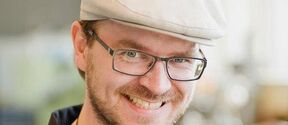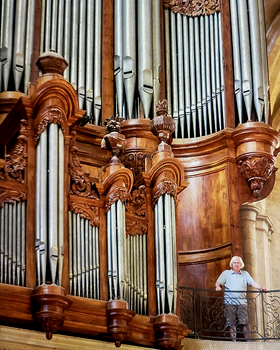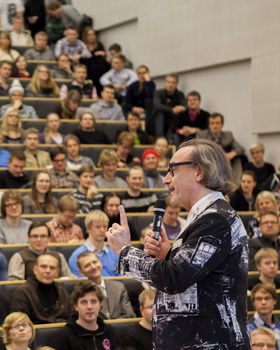Olli Ikkala and Esa Saarinen found a common thread in baroque music and lecturing
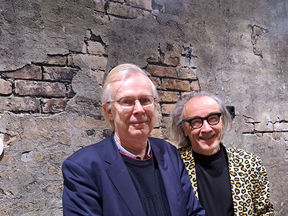
Olli Ikkala: When I was young, I studied seriously at the Sibelius Academy. I mainly played as a substitute organist in Munkkiniemi Church and in the German Church. I think I even played for seven weddings in one day. When I was a doctoral student, I woke up at five in the morning and went to Munkkiniemi Church to play for an hour before I went to do my research at the Low Temperature Laboratory. I stopped playing for a long time, but now I play an hour every day again, mainly French baroque.
Esa Saarinen: When you play the organ yourself, how do you hear the sound?
Olli Ikkala: In church organs, the player is often inside the organ, so there are often pipes in front and behind, especially in Central or Southern European churches. The whole hall resonates, including the player. There is also a long echo. In some French cathedrals there can be a reverberation of up to ten seconds. You have to play very loosely so that the sound doesn't get muffled down in the church hall.
I have a two-story living room, or organ loft, at home too. We got the fingerboards and the footboard from the manufacturer, and my son built me a virtual organ at home. It has the right sound and feel. In fact, it emulates the organ of Saint-Maximin-la-Sainte-Baume in Provence, France, with all its rattles, using midi technology. They are one of the most famous baroque organs in the world. They survived the French Revolution intact because Marseilles was played there once a day.
The instruments
Esa Saarinen: Interesting indeed. How big are these home organs physically?
Olli Ikkala: They are not very big. If there were real organs at home, the problem would be maintaining the tuning, placing the pipes in the apartment, and playing the organs in the small acoustics of a city apartment. When the humidity changes, the organ would have to be tuned again. It takes a good ear and a lot of time. This is where the modern times brings a new alternative: the virtual organ.
It is interesting to note that in the Baroque era, tuning was not the same as it is now. First of all, the tuning level was lower, so the works sounded different and softer. The tuning system was not the same either. Pythagoras already noticed that when you start from middle C on the piano, there are two intervals, the fifth and the octave, which have to be tuned cleanly. At some point, you get basically the same note, but they are slightly different. There is dissonance. Bach came up with the idea of dividing the error equally between all the keyboards, and a tuning known as the 'well-tempered clavier' ('wohl-temperiert clavier') was born. All the keys sound the same. But in the Baroque period, the tuning error was distributed differently, and some tunings sounded terribly unstable and tragic. They were false. This was done deliberately because they wanted different moods or 'affects' to create imagery. It is no coincidence that Bach composed his Mass in B minor.
Esa Saarinen: We’re talking about purity here. My lectures are in some sense impure. Yet they are exactly as they should be. Maybe this is the kind of baroque lecturer I am.
Olli Ikkala: Sibelius said that you should have everything you need, but nothing extra. Then everything is beautiful and clear.
Esa Saarinen: When I was still in office, I gave lectures to new students during orientation week. They were great events. But I didn't always know the theme of the lecture beforehand. I felt it was secondary. I have a mood, like a composition in my mind. Not so much what words I sing over it.
Home studios
Olli Ikkala: When you give lectures, do you make a precise plan, or do you let the mood take over? Do you improvise?
Esa Saarinen: I let the mood take over. There is no exact plan, just really strong preparation. It's important for me to get to the point of affection. I examine some examples to see if it rings a bell in my heart.
I think about how the aesthetics of the lecture feels beautiful and right in the core and in the heart. The acoustics of the situation support my thinking. I play the instrument of thinking with the people in the lecture hall. The acoustics are how my thinking is reflected back to me in the moment. Even for familiar melodies, the thought plays vividly and beautifully, going to the core. In some ways, everyone in the hall is a member of the orchestra because everyone is playing their own instrument of thought.
Olli Ikkala: How do you give lectures? For me, giving remote lectures is terribly difficult. I’m used to sensing the presence of people and the audience through music, and I can't do it through a screen. Physical lectures are easier because I can get in the middle of people. I can have a conversation with people, but not with a screen.
Esa Saarinen: My view is the same, I want the experience of people. But at the beginning of the Covid times, I thought that if I had a big screen and saw enough people, that might be sufficient. I came up with the concept of face light. In Zoom, I can see 25 screens and people's faces - actually better than if I were in a lecture hall.
When playing in a lecture hall, I can be disturbed by physical elements such as banging or someone slouching. But the face light is more pronounced and gives the acoustic to the experience.
Another concept that is useful for the lecture is the organ point. This is infact a musical term. It refers to the thematic chords that are playing there in the lecture all the time. It can be, say, human warmth.
Olli Ikkala: I understand this analogy. It can also be useful to think that there are phrases and arcs in music, and that's how a lecture should be. Both are creative processes.
Watch the videos
Read more news
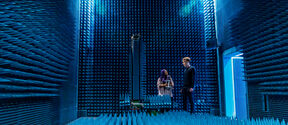
Follow the School of Electrical Engineering on LinkedIn!
In addition to LinkedIn you can find us on Facebook, Instagram and TikTok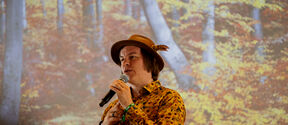
Having autonomy in your life is more important in wealthier countries, says new research on well-being
A worldwide analysis reveals a nuanced relationship between happiness, volition and wealth.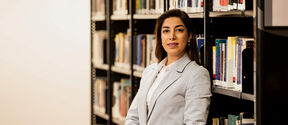
Meet Shaya Vosough, assistant professor of transportation engineering
Shaya Vosough seeks to understand our travel choices and how they are influenced.